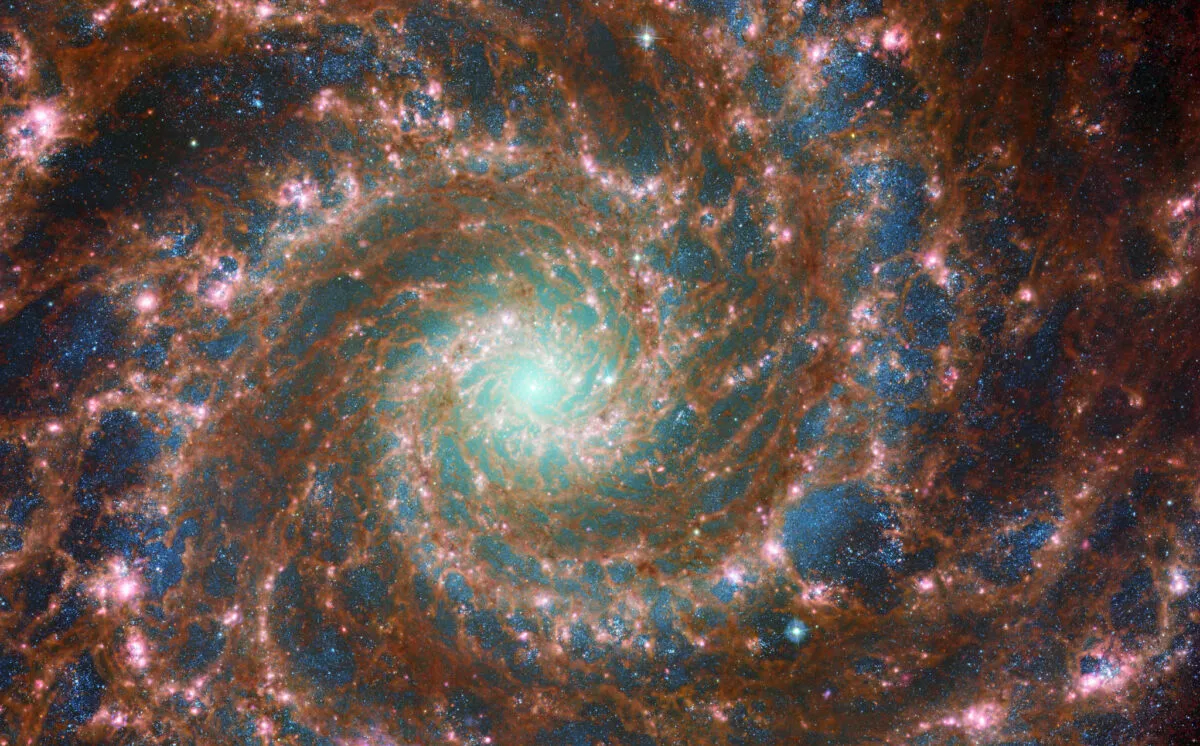This is the latest image from the James Webb Space Telescope: a jaw-dropping capture of the spiral galaxy known as the Phantom Galaxy, or M74 (part of the famous Messier Catalogue of deep-sky objects).
This face-on spiral galaxy is located 32 million lightyears away, and its position relative to Earth means the Webb Telescope has been able to get a full view of its spiral arms and filaments of cosmic gas and dust.
Indeed, the Phantom Galaxy's arms are crisp and well-defined, leading it to be defined as a 'grand design spiral'.
See more of the James Webb Space Telescope's images

The Webb Telescope observed the Phantom Galaxy with its Mid-InraRed Instrument (MIRI), which views in infrared and thus gives astronomers the ability to peer deeper into the galaxy, seeing features that would be obscured when observing in optical light.
The data was processed by citizen scientist Judy Schmidt.
Views like this are set to be a regular feature of the James Webb Space Telescope's output over the coming decades, and will help astrophysicists learn more about the structure and evolution of galaxies.
It will also reveal many of the secrets of star formation, and the role that star formation plays over the lifetime of these colossal cosmic structures.
It could also help with ongoing research into whether galaxies' central supermassive black holes are halting star formation.

This observation of M74 is part of an overarching project by the PHANGS collaboration that's studying 19 star-forming galaxies in infrared.
The project is complementing existing observations by the Hubble Space Telescope and ground-based observatories.

